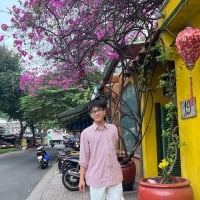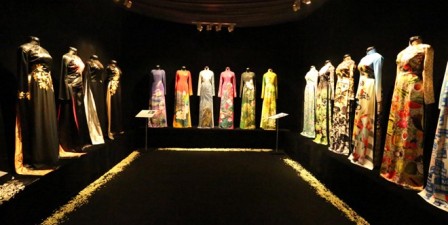Born from the idea of artist - designer Si Hoang, the Ao Dai Museum not only gathers many precious Ao Dai collections, but is also an ideal destination for those who want to learn about cultural values imbued with national identity in a 20,000 m2 garden space.
A place to display stories about the Vietnamese ao dai
The Ao Dai Museum is a place to display the story from its formation to the many changes of the Vietnamese Ao Dai. Visitors coming here will gradually go through the graceful movements of the Ao Dai through the ages. From the four-panel, five-panel, royal Ao Dai, Lemur Ao Dai, high-neck Ao Dai, raglan Ao Dai, boat-neck Ao Dai, hippy Ao Dai, painted Ao Dai, brocade Ao Dai...

The Ao Tu Than was born in the 17th century. At that time, because the woven fabric was only 35 - 40 cm wide, the front of the shirt was made up of two separate panels, and the back of the shirt was sewn together.

The five-panel ao dai consists of two pieces of fabric sewn together to form a discreet front panel, with a secondary panel located underneath on the right side. The ao dai always has five buttons to represent the Vietnamese people's ethics of humanity - courtesy - righteousness - wisdom - trustworthiness.
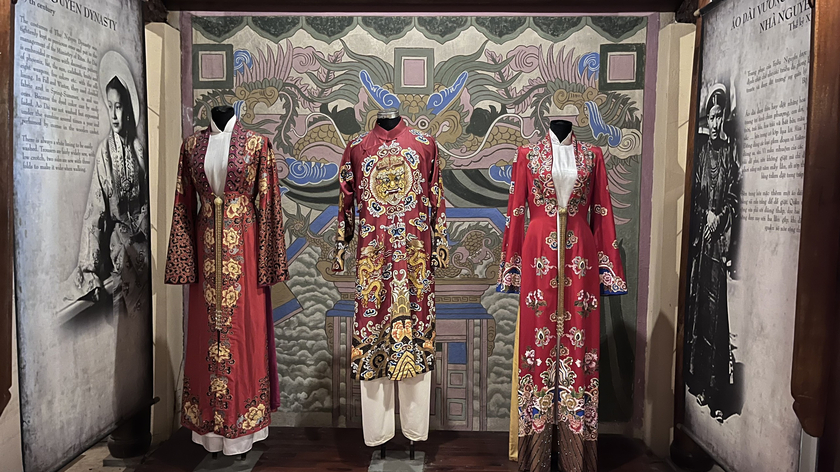
The Nguyen Dynasty Ao Dai in the 19th century. The Ao Dai was made of precious fabrics, embroidered or woven with decorative patterns of phoenixes, bats, the sun, gourds, fruits and eight precious objects, five colors... with a silk lining inside.
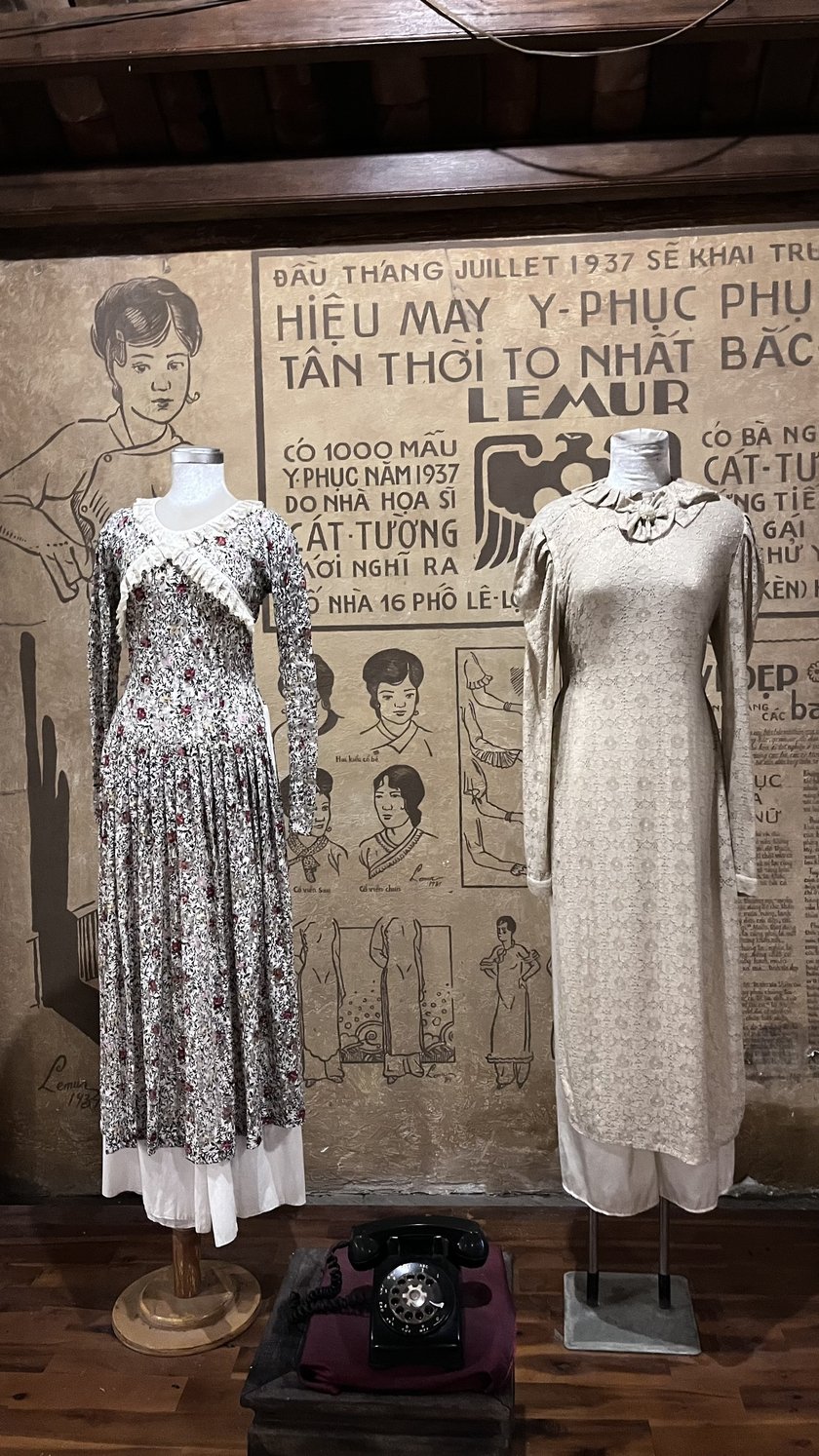
The modern ao dai or Lemur ao dai appeared in the 1930s, designed by artist Nguyen Cat Tuong. He created the style and shape: with collar, without collar, with sleeves, short sleeves, without sleeves, puffed shoulders, flat shoulders, flared cuffs, not flared, with buttons, without buttons, long flaps, short flaps...
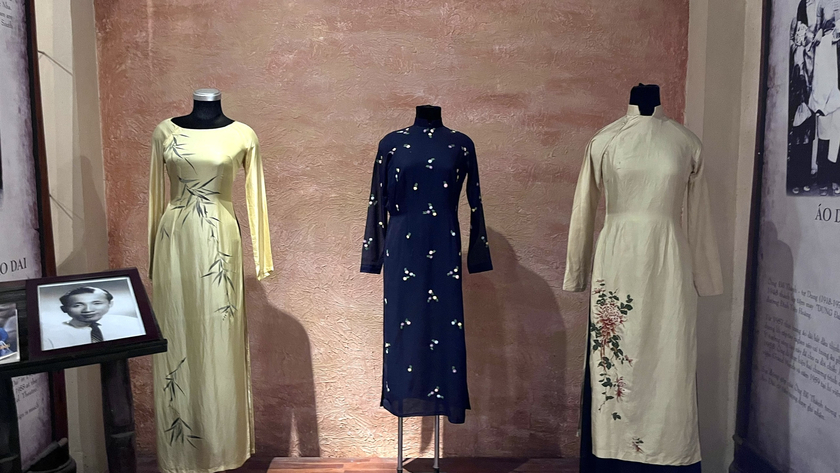
Boat neck ao dai (left) and high neck ao dai.
Sharing with Travellive, Ms. Huynh Ngoc Van - Director of the Ao Dai Museum said: "In almost every field, from politics, economics, culture, to health, education... there are famous and successful people. The Ao Dai is associated with the name, career, image, contributing significantly to the success of each individual in particular and the field in general."
She cited that diplomat Nguyen Thi Binh always wore the ao dai in special important events. The ao dai was associated with her public image when she was Vice President, and was the outfit she chose for the official signing ceremony of the Paris Agreement. Or Ton Nu Thi Ninh, Nguyen Phuong Nga, Nguyen Thi Hoi - those who worked in diplomacy, always appeared in the ao dai in important occasions, bringing the beauty of the Vietnamese ao dai around the world.
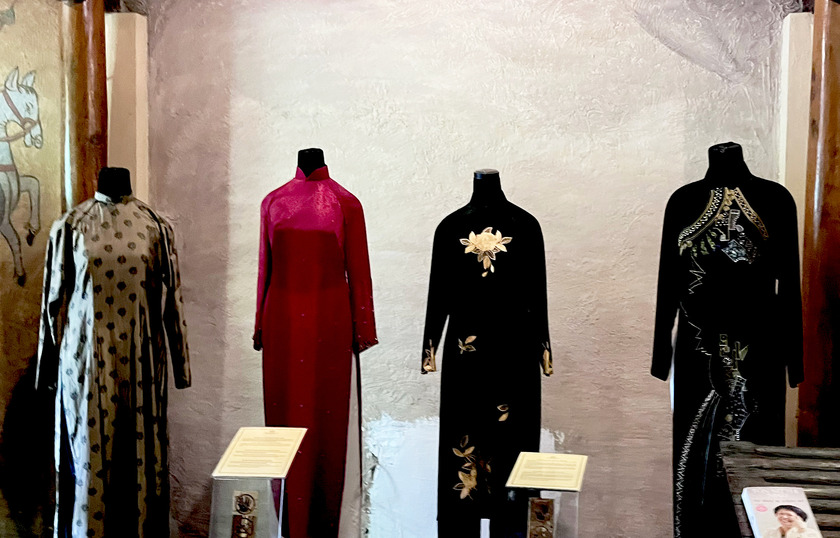
Ao dai from left to right: Ton Nu Thi Ninh - Nguyen Phuong Nga - Nguyen Thi Binh - Nguyen Thi Hoi.
This place also gathers the Ao Dai with special meaning of the artisans. For them, Ao Dai is not only an asset, but also a great spiritual value associated with their life and career. When coming here, visitors should not only admire the unique beauty of each Ao Dai, but also stop to ponder the hidden stories behind - shared completely free of charge by the tour guide team at the Museum.
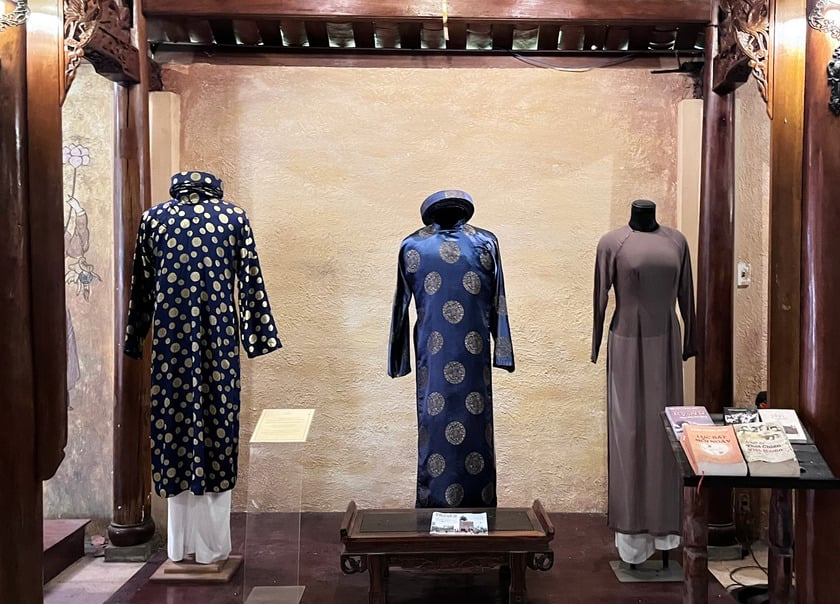


The place where special ao dai gather.
A place where architectural, cultural and culinary heritage converge
The Ao Dai Museum garden is located on Long Phuoc island, surrounded by two large rivers, the Tac River and the Dong Nai River, so the trees in the garden are lush and the air is fresh and cool all year round. The Ao Dai Museum is an open architectural complex, connected with nature, evoking many emotions about traditional cultural values.


The architecture of the Ao Dai Museum evokes Vietnamese space, a place that nurtures ancient but never outdated traditional values.
The Ao Dai Museum campus is a gathering place for many clusters of buildings with familiar folk architecture such as the architecture of Quang Nam communal houses, appearing harmoniously in the natural landscape imbued with the characteristics of the Mekong Delta region. When entering here, visitors can relax in the fresh green of the trees, and feel nostalgic when entering the ancient houses.
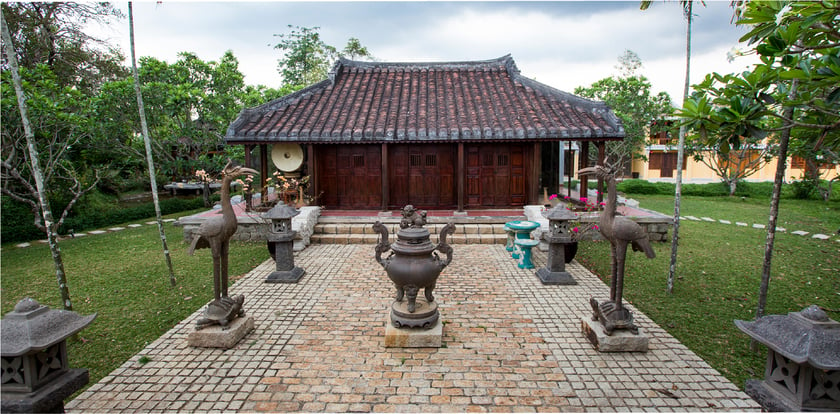
The museum's structures are mostly made of wood, authentically restored by the skillful hands of Kim Bong artisans.
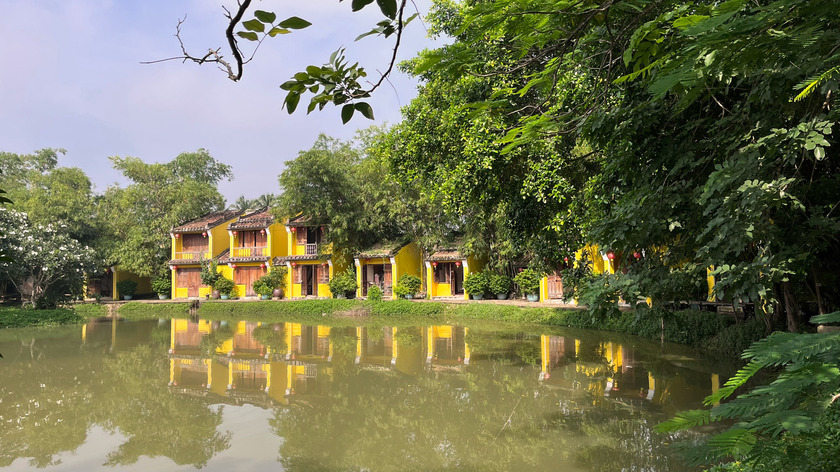
Featuring typical Vietnamese architecture, the Ao Dai Museum is a fusion of the ancient house style of Quang Nam with the typical mark of the river delta region.
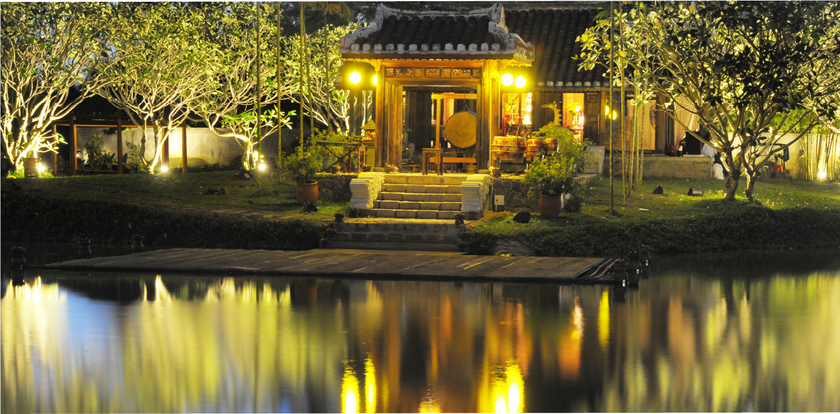
The floating stage on Chan Lac Lake is designed to organize unique performing arts events, recreating the image of the village communal house yard - a place where folk cultural beauty converges and is preserved.
Visitors can also find Bau Truc Cham pottery exhibition space - the Cham pottery art recognized by UNESCO as an Intangible Cultural Heritage in need of urgent protection. Bau Truc pottery is highly unique, hand-crafted, without a turntable. This unique beauty has been displayed by designer - artist Si Hoang, who has been involved since 1986 in a space of about 40 m2 at the Museum.
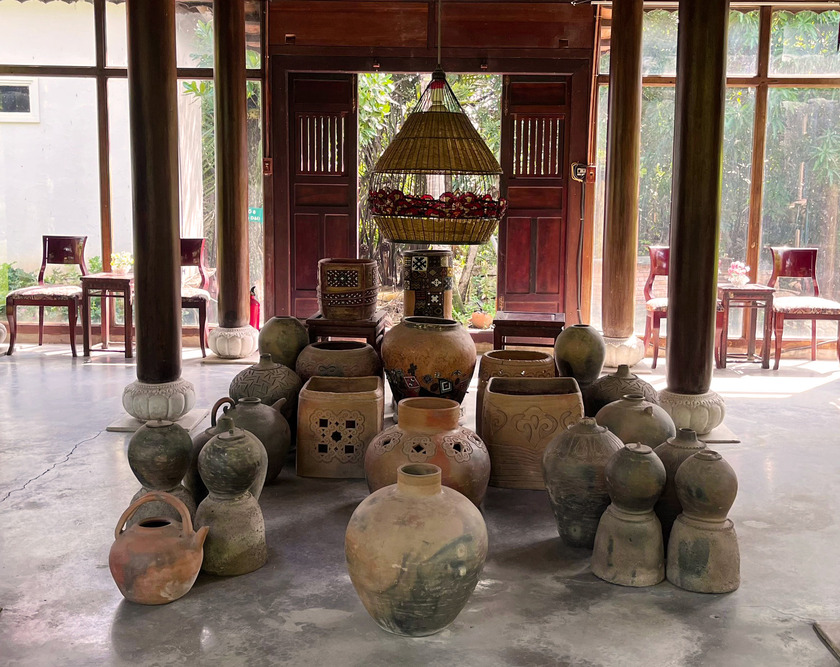
Designer Si Hoang adds brocade and beaded details to ceramic products.
The Ao Dai Museum is also a place to connect and organize cultural exchange activities between countries. In 2018 and 2019, the Tsumami Traditional Fabric Flower Association (Japan) collaborated with the Vietnam - Japan Friendship Association of Ho Chi Minh City and the Ao Dai Museum to design, perform and display Vietnamese Ao Dai decorated with Japanese Tsumami fabric flowers.
Recreational and entertainment activities to experience the typical folk lifestyle of the river homeland are also regularly organized, designed to suit the age group to foster a love of ao dai and traditional culture from a very early age for future citizens.
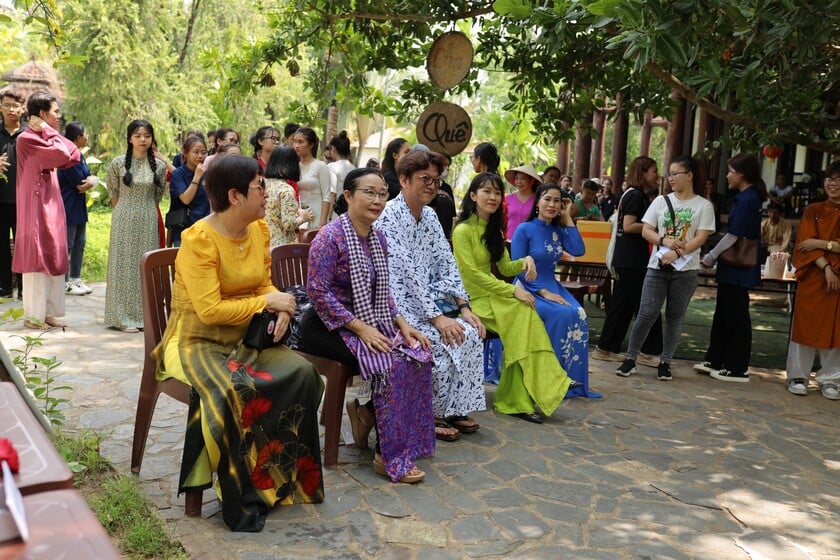
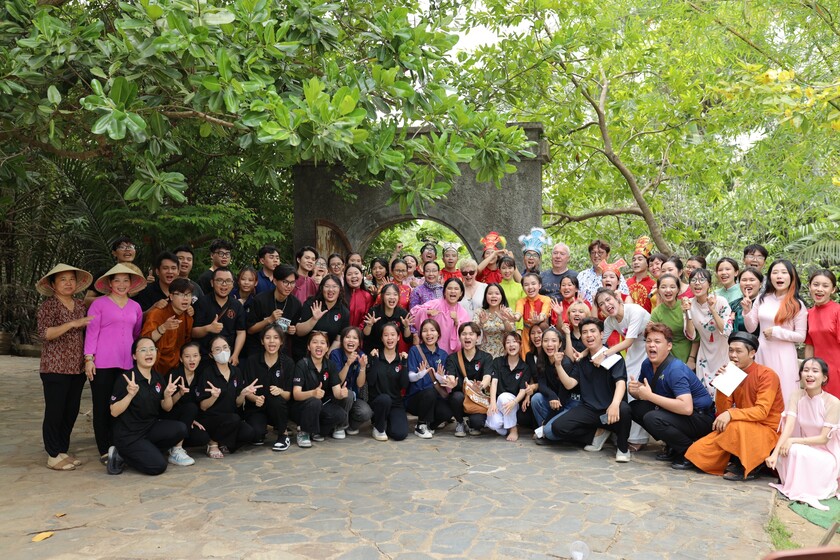
The Ao Dai Museum is a space that organizes many cultural experiences for young people.
Since 2021, the Ao Dai Museum has supported local people to work here to develop community tourism and preserve local culinary specialties. Every Saturday and Sunday, the Countryside Market takes place with food stalls such as: mussel pancakes, beef wrapped in betel leaves, and coconut water with rock sugar. Coconut leaf tying activities are also held regularly to introduce to visitors a familiar folk game of the Southern people.








